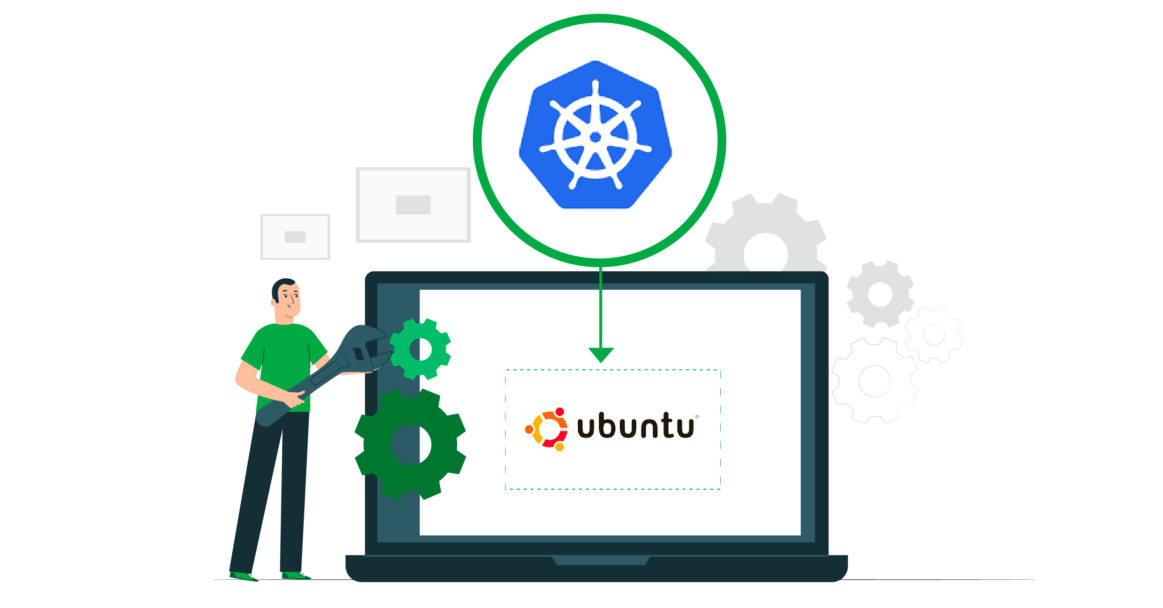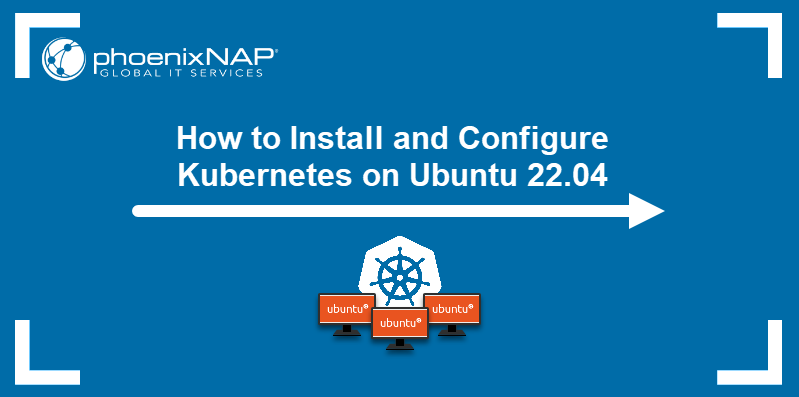Preparing Your Ubuntu System for Kubernetes Installation
To install Kubernetes on Ubuntu 20.04 successfully, begin with a clean installation of the operating system. Ensure sufficient system resources are available; at least 2GB of RAM is the minimum requirement, although more is strongly recommended for optimal performance. A user account with sudo privileges is also necessary for executing administrative commands. Before proceeding with the Kubernetes installation, it is crucial to update the system’s package lists and upgrade all installed packages. This ensures you have the latest security patches and software versions, crucial for a stable Kubernetes cluster. Use the commands apt update and apt upgrade for this purpose. These commands download and install the latest updates. Regularly reboot your system after major updates. Network connectivity is vital throughout the process. Troubleshoot connection issues by checking your network settings and ensuring your system has a stable internet connection. If problems persist, refer to Ubuntu’s official documentation for network troubleshooting guidance. Remember, a stable base system is key to a successful Kubernetes installation on Ubuntu 20.04. This foundational step ensures that the installation process proceeds smoothly and avoids potential conflicts or errors later on. Investing time in this preparation phase significantly reduces the risk of issues during the subsequent steps of installing Kubernetes on Ubuntu 20.04.
Proper preparation is paramount when you aim to install Kubernetes on Ubuntu 20.04. Addressing potential issues proactively saves time and effort later. For example, insufficient RAM can significantly impact performance, leading to slow response times and potential instability. Similarly, outdated packages increase the risk of security vulnerabilities and compatibility problems. The apt update and apt upgrade commands are essential steps in mitigating these risks. They fetch the latest updates, including security patches, ensuring a more secure and robust environment for your Kubernetes cluster. A well-maintained system also contributes to improved system stability and reduces the chances of encountering unforeseen errors during the Kubernetes installation. Before starting the installation of Kubernetes on Ubuntu 20.04, take the necessary time to verify that your system meets all the prerequisites and is fully updated. This ensures a smooth installation process and a stable, functioning Kubernetes cluster.
Successfully installing Kubernetes on Ubuntu 20.04 requires careful attention to detail, especially during the initial system preparation phase. The steps outlined above provide a solid foundation. Regularly updating your system is vital for both security and stability. It’s best practice to reboot after significant updates. This allows changes to fully take effect, preventing conflicts or unexpected behavior. Addressing network connectivity problems before proceeding is essential to avoid disruptions during the installation process. A smoothly running base system directly translates to a more stable and efficient Kubernetes cluster. By focusing on these preliminary steps, you ensure a more successful Kubernetes deployment on your Ubuntu 20.04 system. This attention to detail during initial setup will contribute to a more reliable and efficient Kubernetes environment in the long run. Investing time in these steps saves troubleshooting time later.
Installing Docker and containerd: Prerequisites for Kubernetes on Ubuntu 20.04
To install Kubernetes on Ubuntu 20.04 successfully, begin by installing Docker and containerd. These are crucial container runtime environments. Containerd acts as a container runtime, managing the containers’ lifecycle. Docker provides a user-friendly interface to interact with containerd. First, update the apt package index: `sudo apt update`. Then, install required packages using: `sudo apt install apt-transport-https ca-certificates curl gnupg lsb-release`. Next, add the Docker GPG key: `curl -fsSL https://download.docker.com/linux/ubuntu/gpg | sudo gpg –dearmor -o /usr/share/keyrings/docker-archive-keyring.gpg`. Add the Docker repository to your system: `echo \ “deb [arch=$(dpkg –print-architecture) signed-by=/usr/share/keyrings/docker-archive-keyring.gpg] https://download.docker.com/linux/ubuntu \ $(lsb_release -cs) stable” | sudo tee /etc/apt/sources.list.d/docker.list > /dev/null`. Update the apt package index again: `sudo apt update`. Now, install Docker Engine, containerd, and Docker Compose: `sudo apt install docker-ce docker-ce-cli containerd.io docker-compose-plugin`. Verify the installation by running `sudo docker run hello-world`. This command will download a test image and run it in a container. A successful message confirms the installation. Finally, add your user to the docker group to avoid using `sudo` every time: `sudo usermod -aG docker $USER`. Log out and back in for the changes to take effect. This setup is essential before proceeding with the Kubernetes installation.
The installation of Docker and containerd is a fundamental step in the process of installing Kubernetes on Ubuntu 20.04. These tools provide the necessary containerization environment for Kubernetes to function. Remember to verify each step to ensure smooth installation and avoid unexpected errors during later phases of the Kubernetes setup. Proper configuration will significantly ease the process of installing Kubernetes on Ubuntu 20.04. This straightforward guide simplifies a potentially complex process. By following these steps precisely, users can confidently proceed to the next stage.
Following the successful installation of Docker and containerd, the system is prepared for the core Kubernetes components. This process is critical for building a robust and functional Kubernetes cluster. Successfully completing this stage allows for seamless integration with subsequent steps involved in installing Kubernetes on Ubuntu 20.04. The smooth operation of Docker and containerd ensures the successful deployment and management of Kubernetes pods and other crucial components. Mastering these foundational tools greatly assists in managing the Kubernetes environment effectively and makes the task of installing Kubernetes on Ubuntu 20.04 more efficient and reliable. The step-by-step instructions provided here aim to facilitate a smooth installation, ensuring that users can confidently proceed with the installation of Kubernetes on Ubuntu 20.04.
Enabling Kubernetes Components on Ubuntu 20.04
To install Kubernetes on Ubuntu 20.04, begin by updating the system’s APT package sources. This ensures you’re installing from the official Kubernetes repository, guaranteeing stability and security. Add the Kubernetes repository using the appropriate command for your version. Using the official repository is crucial to avoid compatibility issues and receive security updates promptly. This step is critical for a smooth Kubernetes installation process on your Ubuntu system.
Next, install the essential Kubernetes packages: kubeadm, kubelet, and kubectl. These components are fundamental for running and managing a Kubernetes cluster. Kubeadm initializes the cluster, kubelet manages the node, and kubectl provides the command-line interface for cluster interaction. Use apt to install these packages. Verify each installation by checking their versions using the appropriate commands. This ensures that all necessary components are correctly installed for a seamless Kubernetes cluster deployment on your Ubuntu 20.04 machine. Remember to regularly update these packages to benefit from bug fixes and security patches to maintain a robust and secure Kubernetes environment. Successful installation of these packages is a key step in successfully installing Kubernetes on Ubuntu 20.04.
The process of installing Kubernetes on Ubuntu 20.04 involves several steps. Successfully completing each step, from updating APT sources to verifying package installations, is essential. Pay close attention to error messages during installation. These messages provide clues for troubleshooting. For example, network connectivity problems can hinder the installation. Address any errors promptly to ensure a smooth installation of Kubernetes on your Ubuntu 20.04 system. The correct installation of these components represents a significant step towards a functional Kubernetes setup. Remember, a stable base is key for efficient operation. This ensures that the installation of Kubernetes on Ubuntu 20.04 progresses smoothly and provides a strong foundation for your Kubernetes cluster.
Initializing Your Kubernetes Cluster: The kubeadm init Command
Setting up the Kubernetes control plane is a crucial step in the process of installing Kubernetes on Ubuntu 20.04. This involves using the `kubeadm init` command. This command bootstraps a new Kubernetes cluster. It sets up the essential control plane components, including the kube-apiserver, kube-scheduler, and kube-controller-manager. The command’s success directly impacts the functionality of your entire Kubernetes cluster. Before executing `kubeadm init`, ensure your system meets the prerequisites outlined in previous sections. The command itself might require adjustments based on your specific needs. For example, using the `–pod-network-cidr` flag allows specifying the IP range for the pod network. You should carefully review the available flags and their implications before proceeding. The command will output various information, including instructions for joining worker nodes and retrieving the kubeconfig file. The kubeconfig file is essential for interacting with the cluster using kubectl. Failure to correctly execute this command will prevent the cluster from functioning properly.
Successfully running `kubeadm init` initializes the master node. The output provides instructions on how to join additional worker nodes to the cluster. The process involves obtaining a unique join command from the master node. This command is then executed on each worker node. Each worker node then becomes part of the cluster. This expands the cluster’s capacity and introduces redundancy, improving overall system resilience. During the initialization process, various errors might occur. Network issues are common culprits, as the components rely on network communication. Ensure all nodes are reachable. Insufficient resources (CPU, RAM) on the master node can also impede successful initialization. Carefully review any error messages, and consult the Kubernetes documentation for troubleshooting guidance. Remember to regularly check the status of your cluster using kubectl commands to monitor its health after installing Kubernetes on Ubuntu 20.04.
After running `kubeadm init`, you need to retrieve the kubeconfig file. This file contains the authentication and configuration details needed to communicate with your Kubernetes cluster. The location of this file is displayed in the `kubeadm init` output. The file allows the use of kubectl, the command-line tool for interacting with your Kubernetes cluster. With this file, you can manage and monitor your Kubernetes resources, including pods, deployments, and services. The kubeconfig file is essential for any further interaction with the cluster, making it a critical component of your Kubernetes setup. Successfully completing this step is crucial for managing your newly installed Kubernetes cluster on Ubuntu 20.04. Regularly updating Kubernetes components is crucial for security and stability, ensuring a secure and performant Kubernetes environment. Monitoring your cluster’s health is vital after installation. Using `kubectl get nodes` provides the status of all your nodes, confirming their connection to the cluster. Successfully deploying a sample pod confirms the cluster’s functionality.
Joining Worker Nodes to Your Kubernetes Cluster
Expanding your Kubernetes cluster by adding worker nodes significantly enhances scalability and redundancy. This allows for distributing workloads across multiple machines, improving performance and ensuring high availability. To install kubernetes on ubuntu 20.04 and add a worker node, first retrieve the join command from your control plane node. This command is crucial for connecting the worker node to the existing cluster. Execute the command `kubeadm token create –print-join-command` on your control plane. This generates a unique command tailored for adding new nodes. Copy this command; you will need it on the worker node.
On your worker node, which should also be a fresh Ubuntu 20.04 installation, ensure Docker and containerd are installed and running, as outlined in previous steps of this guide on how to install kubernetes on ubuntu 20.04. Then, execute the join command you obtained from the control plane. This command will securely link the worker node to the cluster’s control plane. Following the execution, verify that the node is correctly joined by running `kubectl get nodes`. You should see your worker node listed, showing its status as `Ready`. If the node shows an error status, review the logs for detailed information on troubleshooting the issue. Remember to properly configure network connectivity between the nodes for optimal cluster performance when you install kubernetes on ubuntu 20.04.
Adding worker nodes is a straightforward process once you understand the basic steps. Remember that each worker node must meet the same minimum system requirements as your control plane node. The process of adding multiple worker nodes is the same as adding one; simply repeat the steps for each new node. This allows for easy scaling of your Kubernetes cluster to handle larger workloads. Consistent monitoring of your nodes is essential for maintaining cluster health. Regularly checking the status of your control plane and worker nodes helps ensure the continued stability and performance of your Kubernetes deployment when you install kubernetes on ubuntu 20.04.
Verifying Your Kubernetes Cluster After Installation
After successfully installing Kubernetes on Ubuntu 20.04, verifying the installation is crucial. Begin by checking the status of the control plane components. Use the command `kubectl get nodes` to view the nodes in your cluster. Expect to see at least one node with a status of “Ready.” If you added worker nodes, they should also show as “Ready.” A node failing to become ready indicates a problem that requires further investigation. Examine the node’s logs for clues. Network connectivity issues are a common cause of this problem. Ensure that the kubelet service is running and that the kubelet can reach the API server.
To further validate the installation, perform a basic deployment. A simple deployment of a test pod confirms the cluster’s functionality. You can use a command like `kubectl run nginx –image=nginx –replicas=1` to deploy a single instance of the Nginx web server. Then, use `kubectl get pods` to check the pod’s status. The pod should show as “Running.” Once running, you should be able to access the Nginx web server using its service IP address or by exposing it as a service. If the pod fails to deploy or doesn’t run correctly, there could be problems with the Kubernetes configuration or networking setup. Consult the Kubernetes documentation and check pod logs for debugging information. Remember, a successful `kubectl` command demonstrates that your command-line tools are communicating properly with the Kubernetes API server, a key indicator that your install kubernetes on ubuntu 20.04 process has been completed successfully.
Troubleshooting is often necessary when installing kubernetes on ubuntu 20.04. Common issues include incorrect configurations, network connectivity problems, and resource limitations. Always refer to the official Kubernetes documentation and community forums for assistance. Regularly update your Kubernetes components to benefit from bug fixes and security patches. Consistent monitoring of your cluster’s health is essential for proactive problem detection and remediation. This ensures optimal performance and reduces downtime. This comprehensive verification process ensures the successful installation of kubernetes on ubuntu 20.04 and enables seamless operation.
Understanding Fundamental Kubernetes Concepts
After successfully installing Kubernetes on Ubuntu 20.04, understanding core concepts is crucial for effective cluster management. Pods represent the smallest deployable units in Kubernetes. They encapsulate one or more containers, sharing resources like CPU and memory. Deployments manage replicated pods, ensuring the desired number of instances remains available. They handle updates and rollbacks gracefully. Services expose pods to internal or external networks, providing stable access points. Namespaces logically separate resources, useful for organizing and isolating different applications within the cluster. This improves resource allocation and security. To successfully install Kubernetes on Ubuntu 20.04 and manage your applications effectively, a strong understanding of these building blocks is key.
Let’s illustrate these concepts with examples. Imagine deploying a web application. A single pod might contain the web server container. A deployment ensures multiple instances (replicas) of this pod are running. A service acts as a gateway, directing traffic to the various pod instances. Multiple teams can use namespaces to segregate their applications and resources, preventing conflicts. Efficiently managing your Kubernetes cluster after installing Kubernetes on Ubuntu 20.04 involves adept use of these core components. Understanding these foundational elements will enable you to build, deploy, and manage applications with greater efficiency and robustness. Remember, mastering these basics will significantly improve your Kubernetes experience after the installation.
Consider a scenario where you need to scale your application. With deployments, you can easily increase or decrease the number of pod replicas to match demand. Services ensure consistent access despite pod changes. Namespaces provide isolation and organization. These fundamental concepts, combined with proper deployment strategies, are essential for any production-ready Kubernetes environment following a successful install kubernetes on ubuntu 20.04. Mastering these concepts ensures reliable, scalable, and maintainable applications within your Kubernetes cluster. A deep understanding of pods, deployments, services, and namespaces will empower you to fully leverage the potential of your Kubernetes cluster.
Securing Your Kubernetes Cluster: Essential Best Practices
After successfully installing Kubernetes on Ubuntu 20.04, securing the cluster is paramount. This involves implementing several crucial security measures to protect your applications and data. Role-Based Access Control (RBAC) provides granular control over user access, allowing administrators to define precise permissions for each user or group. This prevents unauthorized access and limits the potential impact of security breaches. Implementing RBAC is a fundamental step in securing any Kubernetes cluster, regardless of its size or complexity. Implementing strong RBAC rules from the outset ensures a more secure environment when installing Kubernetes on Ubuntu 20.04.
Network policies offer another layer of defense. These policies control communication between pods within the cluster. By carefully defining allowed network traffic, administrators can isolate sensitive applications and prevent unauthorized access. This helps to contain the impact of compromised pods, limiting lateral movement within the cluster. Regularly review and update network policies to reflect changes in your application architecture. When you install Kubernetes on Ubuntu 20.04, remember that security is an ongoing process, requiring continuous monitoring and adaptation. Regularly auditing network policies helps mitigate vulnerabilities and improve overall security posture.
Staying up-to-date is crucial for maintaining a secure Kubernetes environment. Regularly update the Kubernetes components, including the kubelet, kubeadm, and kubectl, to benefit from the latest security patches. Kubernetes releases frequently include security fixes, and neglecting these updates exposes the cluster to known vulnerabilities. Employing automated update mechanisms can simplify this process. This is especially important when installing Kubernetes on Ubuntu 20.04, as timely updates protect against emerging threats. Remember that security is a continuous journey, not a destination. By adopting these best practices and regularly reviewing security configurations, you will significantly enhance the security of your Kubernetes cluster.



